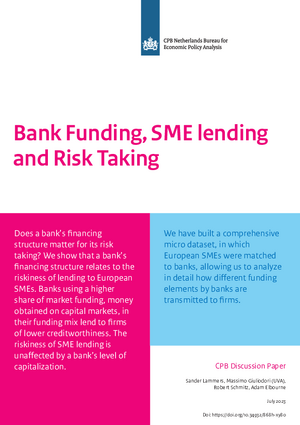Bank Funding, SME lending and Risk Taking
The financing structure of banks primarily consists of equity (capital buffer), deposits (savings from households and businesses), market financing (funds raised from international investors), and interbank loans (loans between banks, including central bank loans). We analyzed the extent to which these individual financing elements contribute to the risks banks take on loans to companies.
Downloads
For this purpose, we utilized a unique microdata set with financial information, linking European companies to their credit-providing banks. Our analysis covered the period 2015-2019 and revealed that banks utilizing more market financing tend to provide loans to riskier companies. This outcome is likely driven by a "search for yield" motive, although the exact underlying mechanism could not be determined with our data. The capital buffer of banks did not seem to have an impact on the risks they take on corporate loans.
Authors


